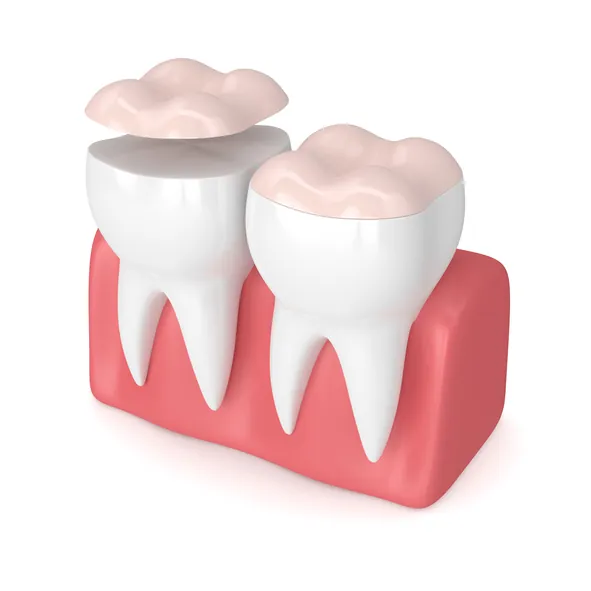Inlays & Onlays
Restoring Smiles, Enhancing Lives

Everything About
Inlays/Onlays
What Are Dental Inlays and Onlays?
Inlays and onlays are dental restorations used to fix damaged teeth. They are a middle option between simple treatments like fillings and stronger treatments like crowns. The choice to use an inlay or an onlay depends on where and how bad the tooth damage is. Inlays fix damage inside the tooth, while onlays restore damage on the tooth’s surface. Dental inlays and onlays help dentists restore badly damaged teeth without needing a full crown. These treatments are custom-made to fill in parts of a tooth that have been hurt, worn, or decayed. Inlays and onlays work for teeth used for biting, like molars and premolars. They make a damaged tooth last longer, letting patients use the tooth for eating and talking.
Dental Inlays
Dental inlays are usually made from ceramic, porcelain, or resin composite. They are made to fit just right into a tooth hole caused by damage or decay. Inlays are strong and better than fillings for restoring damaged or decayed teeth. They can be made to match your tooth color, making them a hidden way to treat bigger dental problems.
Dental Onlays
What Do Inlays & Onlays Treat?
Dentists use inlays and onlays for addressing tooth decay, deterioration, or erosion that surpasses the scope of a simple filling, yet does not necessitate a crown.
Inlays are commonly used for treating large cavities situated between the cusps of a tooth. On the other hand, onlays not only tackle decay but serve additional purposes as well. They are frequently employed to mend teeth with cusps damaged by excessive wear or acid erosion. Both inlays and onlays are beneficial in restoring a tooth’s shape and impeding further harm.
Inlays, Onlays, and Crowns: Understanding The Differences
The main difference between an inlay and an onlay lies in the location of the restoration. An inlay is positioned in the tooth’s center, replacing the pits and fissures that were once there. In contrast, an onlay encompasses at least one tooth cusp and may also cover pits and fissures in some instances.
Dental crowns, however, envelop the whole tooth, including the complete biting surface and all sides. They offer comprehensive coverage and can even alter a tooth’s shape when necessary.
Nonetheless, placing crowns necessitates the removal of a substantial amount of tooth structure. Inlays and onlays present more conservative treatment alternatives, delivering similar advantages to crowns while enabling patients to preserve a greater portion of their natural tooth.

3 Reasons You Might Need Inlays & Onlays
- Large Cavities
- Fractured or Cracked Teeth
- Damaged Tooth Cusps

3 Reasons You Might Need Inlays & Onlays
- Large Cavities
- Fractured or Cracked Teeth
- Damaged Tooth Cusps
How can we help you?
Frequently Asked Questions
Majority of patients do not experience discomfort during the treatment.


